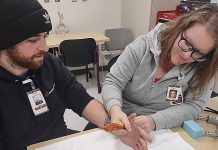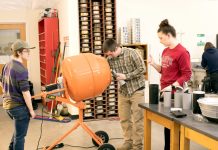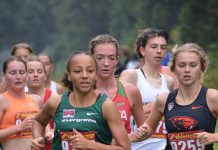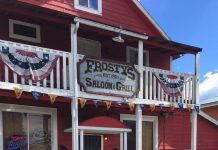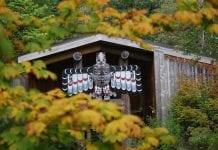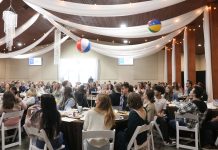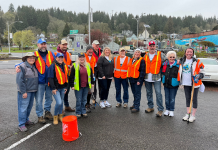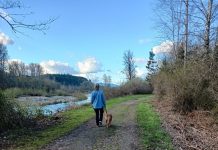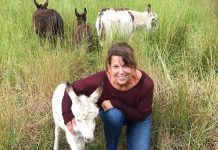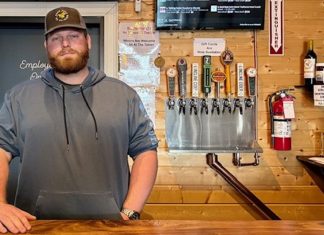On a crisp fall afternoon, a Black Lab ambles purposefully down the prairie path towards a creek bottom. He detects something hunkered down in a tuft of grass and rushes in. The startled ring-neck pheasant takes to the wing and with a quick steadying release of breath, the hunter aims and fires. The joy of fresh air intermingled with the adrenaline produced from a bird suddenly bursting airborne from it’s cover makes pheasant hunting one of the most thrilling and social hunting sports out there.
Pheasant Release Program
The Washington State Pheasant Release Program is a relatively unique form of game farming. First off, it’s the only Washington State sponsored game farming aside from trout. Trout are farmed and planted in lakes throughout the region. The pheasant program is a similar concept; pheasants are raised and released into specific areas. There are two release areas in Lewis County and two in South Thurston County.
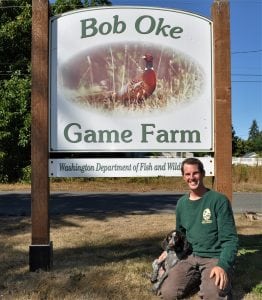
The Bob Oke Game Farm in Centralia produces 43,000 pheasants a year on the 160-acre farm. Of these, 36,000 to 38,000 will be released in Western Washington while approximately 6,000 will be released in Eastern Washington. Chicks are hatched on the farm and, as soon as they’re ready, put into larger enclosures where they have minimal human contact. The goal is to create as close to wild birds as possible.
The Lewis County release sites are the Lincoln Creek Area and the Morton/Kosmos area. The 300-acre Lincoln Creek site is a logged riparian area that has been opened up with fields. Kosmos is an open area within 300 acres of the Cowlitz Wildlife Area near Riffe Lake.
In South Thurston County is the Skookumchuck area, which is 250 acres of prime pheasant hunting at the end of Skookumchuck Road in an open agricultural area. The Scattercreek site is 1,000 acres of natural prairie which is popular for traditional hunting.
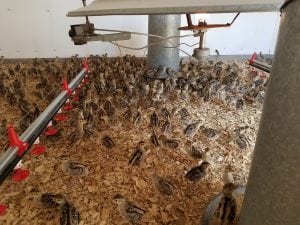
The number of pheasants released in an area depends upon the hunters. When purchasing a license, hunters are asked where they’ll most likely hunt. Their response data is available to the game farm which guides them on how many to release in each location. Consequently, a larger number of pheasants tend to be released in Scattercreek and Skookumchuck than Lincoln Creek and Kosmos. Birds are released three times per week.
The Bob Oke game farm is primarily funded through the Dedicated Pheasant license. The little bit that isn’t covered comes from the Unrestricted Wildlife account. In other words, none of the funds comes from Washington State’s general fund. The pheasant program is paid for by pheasant hunters.
Learning to Hunt
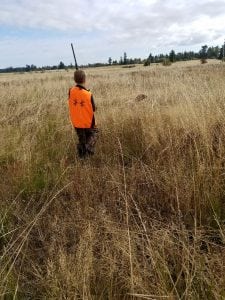
To hunt pheasants, it helps to understand them. These timid birds live in open areas where bugs, grasses and seeds are available. Like many other birds, they peck around for gravel. They enjoy digging holes to create dust baths. At the Bob Oke game farm, the pheasants dig dust holes along the fence of their run and enjoy similar conditions in the wild. Pheasants are commonly found along fence lines and creek edges where they can find cover. Pheasants bed down at night and it’s fun to note that the males sometimes crow or cackle at dusk.
Many hunters use dogs to locate pheasants. There are two major types of hunting dogs. One type are pointers who detect a bird and indicate to the hunter where it’s located. The hunter then flushes the bird out. The other type of dog is a flushing dog who runs up ahead and startles the birds into flight. Both types of dogs generally retrieve as well, once the bird is harvested.
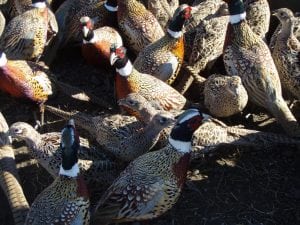
Chris White, manager at the Bob Oke Game Farm, has both kinds of dogs. He recently retired his 14-year-old Chocolate Labrador flushing dog and acquired a German Wirehair Pointer puppy. Chris is excited to train his first pointer. So, what do you do if you don’t have a dog or are between dogs?
“The pheasant hunters are very proud of their dogs and they’re really a friendly group,” explains Chris. “Pheasant hunting isn’t as competitive as big game hunting can be. You can go midday, you don’t have to be as quiet. If you don’t have a dog or you’ve lost a dog, or even if you have a dog and just want to join a group, the people are really friendly and you can usually just walk up.”
Hunter Resources
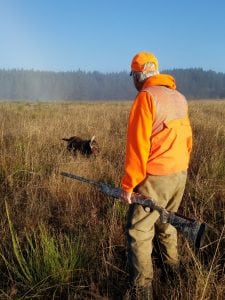
The big thing is safety. Hunter education and firearm safety are important so you don’t harm yourself, someone else or the dog.
Chris White is a great resource. “I’m always happy to tell people where to go and where opportunities are because we’re out there all the time,” he says. “We may see what areas are crowded or what areas are being underutilized.”
The Washington State Department of Fish and Wildlife offers clinics for new hunters and youth.
Tutorial Pamphlets are available online for Upland Bird Hunting in Washington and the Department of Fish and Wildlife Pheasant page also offers hunting strategies.
Another resource is to join a group like Pheasants Forever, or find a sporting dog training group in your area.
The Dedicated Pheasant license is the only license you’ll need to hunt pheasants in Western Washington. The license currently costs $84.50 and Youth and Senior Licenses are $40.50. During the hunting season, a license holder is allowed two birds per day.
The pheasant season starts each year in late September and runs through November 30. In 2018 the youth season starts September 22.



